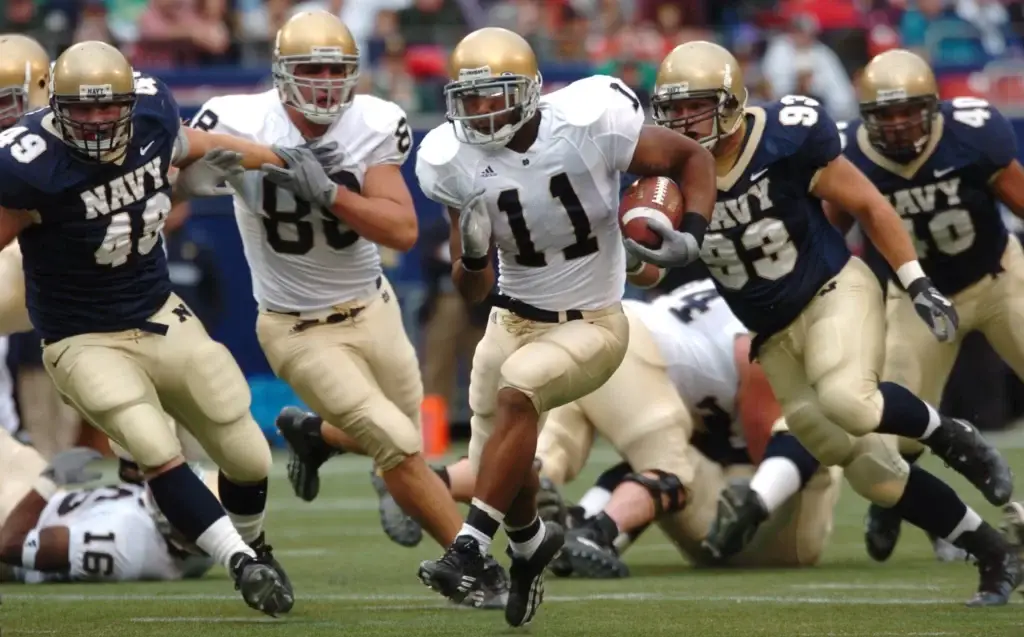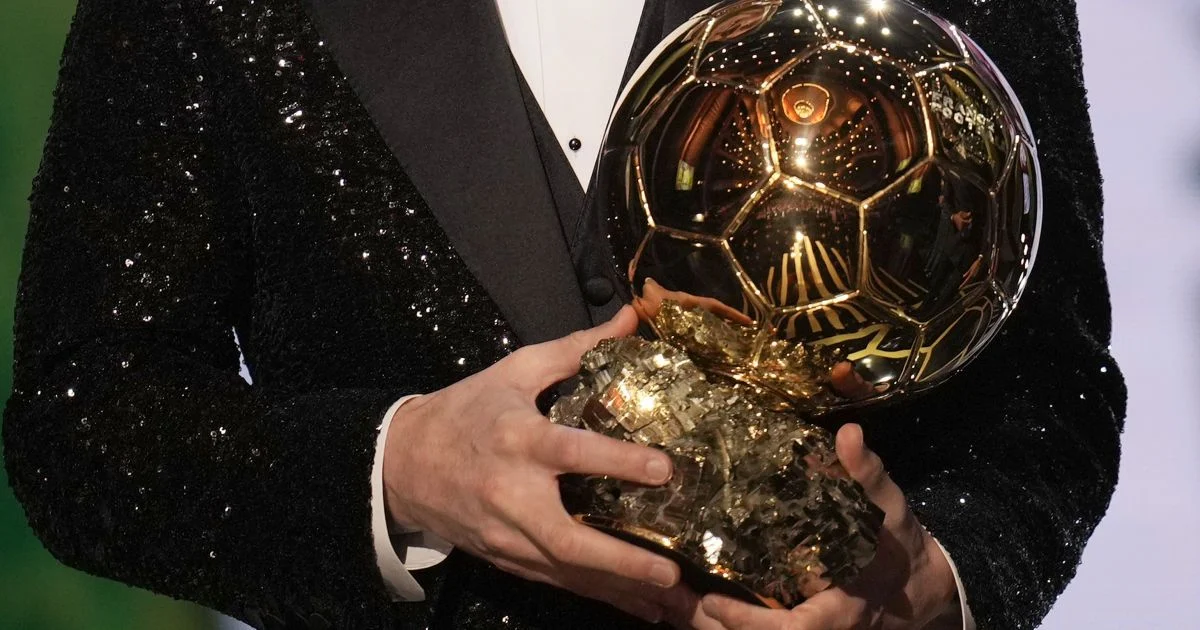The ferocity of the collisions, the strategic combinations and the precision down to the millimetre make American football a spectacle that thrills millions of fans around the world. This game is more than just a sport. It is a battlefield where every play is well thought out and every pass is a challenge for the opponent and a test of endurance. Every second on the pitch is full of tension, and the dynamics of the game keep spectators in constant anticipation.
How to play American football without getting lost in the rules
American football is not just a game where you run around the field with a ball in your hand. It is a carefully organised game where every second counts. A team of 11 players is divided into two main groups: Attack and Defence. The aim of the attack is to get the ball into the opponent’s goal area and score points, while the defence does everything it can to prevent this. Each team has its own style and combinations to overcome the opponent’s defence.

Basic rules of the game:
Down – Attempt to advance the ball 10 yards in four attempts. If this is not successful, the ball goes to the opponent. The correct use of downs requires precise calculation and good coordination between the players.
A touchdown scores six points. A player must cross the goal area with the ball in his hands or catch the ball in the goal area. Touchdowns often decide the outcome of games.
Field goal – kicking the ball over the goal scores 3 points. This technique is often used when a touchdown seems out of reach.
The offence team has 40 seconds between plays to come up with the next combination. This dynamic keeps the audience on the edge of their seats until the final whistle. The plays devised by the coach can include unexpected moves designed to confuse the opposition’s defence and open up scoring opportunities.
The secret of success in American football lies not only in physical fitness, but also in the ability to anticipate the opponent’s actions by several steps. Every movement on the pitch must be sensible and strategic, otherwise the slightest mistake can cost you victory.
Why the pitch is a chessboard for giants
The pitch in American football is a strategic map marked out over 100 yards. Every mark is important for the structure of the tactics. Offensive and defensive players use the pitch as a space for manoeuvres, deceptions and precise calculations. Visual landmarks help players to find their way and make quick decisions, which is particularly important in dynamic games.
Particular attention is paid to the area within 20 yards of the goal, the so-called ‘red zone’. This is where the tension reaches its peak: the defence is put under pressure and the attack is forced to find loopholes in a strong defence. The skilful use of space and knowledge of marker placement allows teams to play combinations with surgical precision. Gaining space and forging ahead requires a high degree of coordination and confidence in the actions of the individual team members.
Positions in American Football: Who’s Who
Understanding the positions will allow you to delve deeper into the tactical intricacies of the game and recognise how well your team needs to work together to be successful.
- The quarterback (QB) is the brains of the offence, distributing the passes and making the decisions. The success of a game often depends on his actions and his ability to read the game.
The running back (RB) is the player who breaks through the defence by running with the ball. His job is to drive the ball as far as possible with strength and agility. - Receiver (WR) – catches the quarterback’s passes. Agility and speed are his most important qualities. He must be able to quickly find open spots on the field.
- Linebacker (LB) – A versatile defender who stops offensive linemen and covers receivers. His strength and speed play an important role in the defence.
Each position has its own strategic value, and the right distribution of players can change the course of an entire game. Synchronisation and understanding between team members is the key to success.
The best American football teams: legends and winners
 American football has given the world legendary teams that have written their names in sporting history forever. Their successes, tactics and outstanding players have become role models for new generations. Each of these teams has its own unique style of play, developed through years of hard training and strategic decisions. Let’s take a look at the most iconic representatives of the National Football League (NFL):
American football has given the world legendary teams that have written their names in sporting history forever. Their successes, tactics and outstanding players have become role models for new generations. Each of these teams has its own unique style of play, developed through years of hard training and strategic decisions. Let’s take a look at the most iconic representatives of the National Football League (NFL):
- The New England Patriots are a symbol of stability and assertiveness. Under coach Bill Belichick and with quarterback Tom Brady, the Patriots have won six Super Bowl titles. Their success is based on careful analysis of their opponents and incredible discipline.
- Pittsburgh Steelers – Known as the ‘Iron Curtain’ because of their strong defence. Six Super Bowl victories and legendary players like Terry Bradshaw and Joe Greene have made this team a symbol of toughness and physicality.
- The San Francisco 49ers are the kings of the 80s and 90s. Under the leadership of Joe Montana and Steve Young, they won five Super Bowls. The team is known for its innovative offensive concepts and outstanding combinations.
- The Dallas Cowboys are a team known for their army of fans and their colourful style of play. Five championship titles and legendary players like Troy Aikman and Emmitt Smith have made the Cowboys a symbol of success and ambition.
These teams dictate the style of play and are the benchmarks for many young athletes. Every victory is the result of analysing the opponent’s actions, strategic thinking and precise combinations on the pitch.
Super Bowl: the pinnacle of American football
The word ‘Super Bowl’ gives millions of sports fans around the world goosebumps. The annual final of the National Football League is an event comparable in scale and spectacle to the Olympic Games. Each game is a great show that combines sport, music and culture.
History and significance of the Super Bowl
The first Super Bowl took place on 15 January 1967 between the Green Bay Packers and the Kansas City Chiefs. Since then, the event has developed into a public holiday. Millions of viewers gather in front of their television sets to see who will be the champion of the season. Each game consists of four exciting quarters in which the result can change at any time.
Celebrity appearances at the American football competition have become as much of a tradition as the game itself. Michael Jackson, Beyonce, Prince and many others have made legendary appearances. The cost of a 30-second commercial during the broadcast amounts to several million dollars, which emphasises the magnitude of the event.
One of the highlights of the Super Bowl is the 2008 final, when the New York Giants defeated the New England Patriots. With 35 seconds left in the game, receiver David Tyree caught the ball by pushing it against his helmet, giving the Giants the win. This episode went down in history as ‘The Helmet Catch’.

Conclusion
 American football is a game that combines physical strength and strategic thinking. There is no room for chance: Every play is the result of careful preparation, every yard is the fruit of hard work.
American football is a game that combines physical strength and strategic thinking. There is no room for chance: Every play is the result of careful preparation, every yard is the fruit of hard work.
 en
en  de
de  ar
ar  es
es  nl
nl  hi
hi  fr
fr  it
it  pt
pt  el
el 










